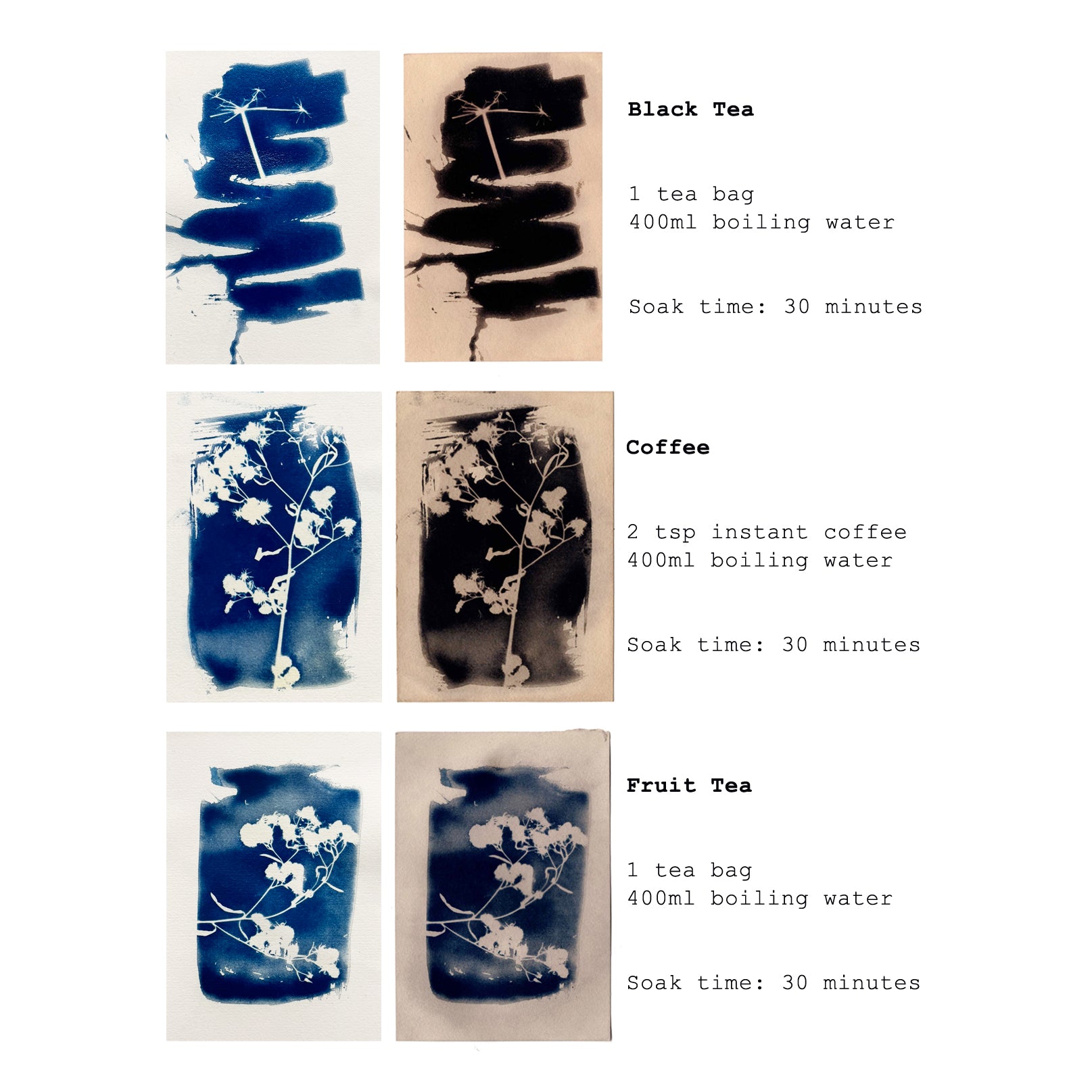Toning Cyanotypes

Did you know that Cyanotype prints don't always have to be blue? They can be toned and even bleached to alter their colour. The key is to use anything with a high tannin content. Tannins are commonly found in the bark of trees, leaves, buds, stems, fruits, seeds, roots, and plant galls.
For this process, you could use tea of different varieties, red wine and even make your own tannin solutions using vegetable peelings and flowers from your garden! Toning is a great way of adding depth, evoking a specific mood, enhancing details, or complementing the subject matter of the image.
In this blog post, we will be taking you through the process of toning your cyanotype prints using instant coffee, black tea and fruit tea.

Start by creating your Cyanotype prints. See our Cyanotype blog post for guidance on this step. We recommend to let your cyanotype print dry for at least 24 hours before beginning the toning process. We also recommend using a heavier weight paper, around 200gsm, as they are going to be submerged in liquid multiple times. Anything lighter weight may start to break down and damage the final print.
For this project, we used the Jacquard Cyanotype kit and painted the solution onto cut pieces of Fabriano paper using a foam brush. We love the rough, painterly edges this gives to the design.

To prepare our tannin solutions we mixed 400ml of boiling water to three separate containers and added one black tea bag to the first, a fruit tea tea bag to the second and two teaspoons of instant coffee to the last. Allow them to steep and cool before using.
Whilst you wait, place your prints into inking trays, or baking trays work well too. You could label each tray, or the back of each print if you are using different tannins to help you remember which is which.

Pour your tannin mixture over the print, making sure that the paper is completely submerged. To ensure that the cyanotype is evenly covered, flip it over so that it is face down in the mixture.

Leave the prints in the tannin bath until the desired toning has been achieved. You will find that the tannin also effects the colour of the paper, especially when using tea or coffee. We left our prints in for 30 minutes but checked them every 10 to see how they were coming along.

Here are the results! You can see from this example that the tea and coffee have almost turned the cyanotypes black and the fruit tea a beautiful Prussian blue. It is amazing that something so simple can achieve such striking and exciting results.
For this project you will need:
- Cyanotype Kit
- UV Light Source
- 220gsm Paper or Fabric to print on
- Foam Brush or Paint Brush
- Inking Tray
- Tannin of your choice - Tea, Coffee, Wine etc.

